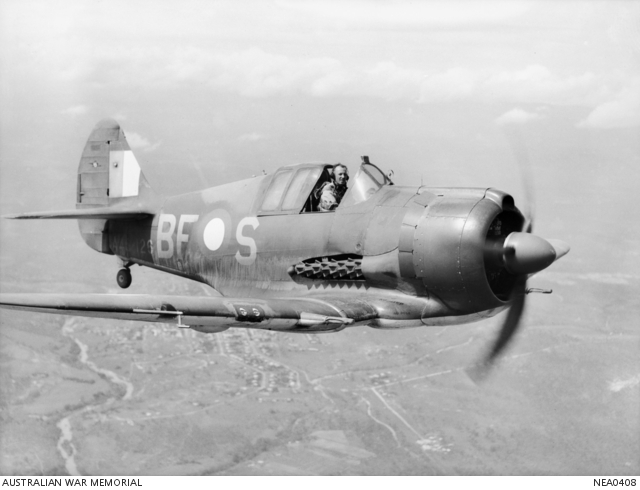it was replaced in multiple squadrons by the P-40 in 1941 and 1942.
But not all. 6 Sqn kept its Hurricanes and, just like in the Far East the Hurricane remained in service until the end of the campaign, then in 1944 it moved to Italy, still equipped with Hurricane IVs. Despite your protestations, Hurricanes remained in the fight for the same length of time as P-40s and in some cases remained after the P-40s had themselves been replaced in those very same fighter squadrons you mention. It should also be mentioned that those Mid East units received P-40s because they were in theatre; the home based Hurricane units that were replacing theirs received Spitfires - P-40s never served in UK based fighter squadrons, but Hurricanes remained in squadron use back home.
Nevertheless, I suspect this won't change your opinion of the Hurricane, which is sad because I do believe you completely underestimate it and its impact. The two types had a lot in common and even by 1941 were both second tier to better fighters operated by the Allies and Axis. Even their production numbers are not that far apart, even if the P-40 underwent more development through fewer airframes.
The Brits sensibly realised from early on it wasn't worth putting development effort into the Hurricane outside of weapons modifications - there was a plan to fit Griffons, but that would have meant less for aircraft that better deserved them. There was no need to advance the Hurricane, yet Curtiss threw as much as it could at the P-40 and it still couldn't match the best fighters being built by other manufacturers, again because its replacement by Curtiss was floundering at every turn. Hawker however gave up on improving the Hurricane's performance beyond 1941 and had turned to the Tornado/Typhoon before then, although the latter had its fair share of headaches, it led to the Tempest, which was one of the best low-altitude fighters of the war, yet Hurricane production continued because it proved a very useful airframe, despite what you believe. Credit where credit is due.
You can accuse me of many things, but not reading the source material isn't one of them.
Well, you missed that one as the source Wiki quoted was exactly the same as I did. Anyway, point taken. Your info is great to read and I've enjoyed you digging this stuff out, Bill.
Last edited:


